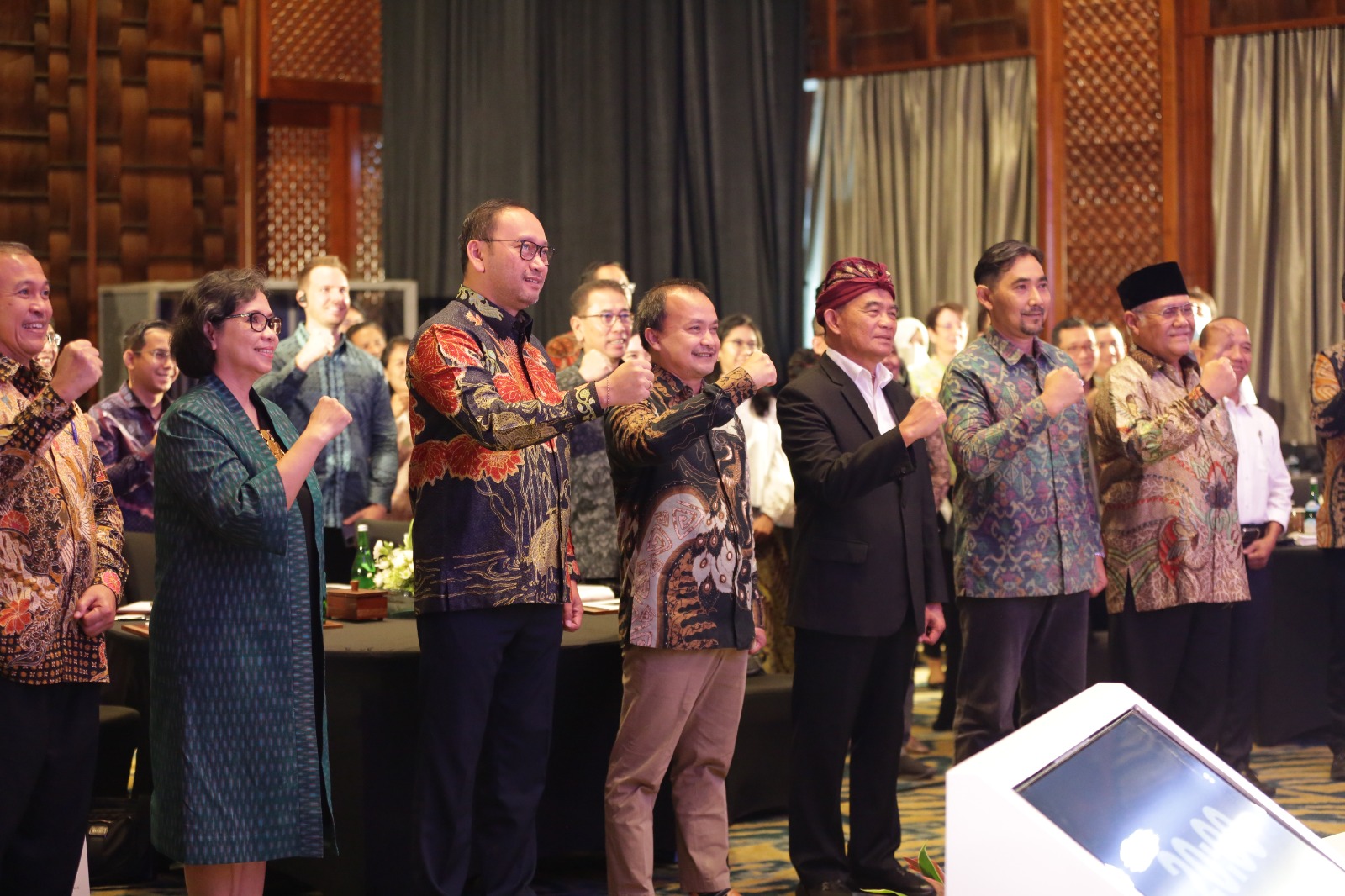MoSA Gives Real Support to Reach Zero Percent Extreme Poverty Target in 2024

Writer :
Alif Mufida Ulya
Translator :
Alif Mufida Ulya
NUSA DUA (May 9, 2023) - The Ministry of Social Affairs (MoSA) supported the acceleration of handling extreme poverty to encourage the achievement of zero percent extreme poverty in 2024. The Minister of Social Affairs Tri Rismaharini has outlined policies that reinforce commitment to handling extreme poverty.
Referring to the directives of the Minister of Social Affairs, Director General of Social Protection and Security, Robben Rico, stated that MoSA had played a role in handling extreme poverty through social assistance programs (bansos) and so on, as well as synergizing internally and externally.
"Basically, MoSA supports the acceleration of handling extreme poverty as an effort to encourage zero percent achievement in 2024, as mandated by Mr. President Joko Widodo," Robben said at the ASEAN Socio-Cultural Community (ASCC) Knowledge Forum 2023 in Bali, Sunday (7/5).
Internally, said Robben, first, MoSA was trying to increase people's income through entrepreneurship programs, with the Nusantara Economic Heroes (PENA) program and the ATENSI Creative Center (SKA).
"Increased income is also sought through employment opportunities, by cooperating with the placement of Beneficiaries (PM) and providing opportunities for PM to be involved in assembling accessibility aids for persons with disabilities," he said.
Second, Robben continued, increasing decent living standards through the Integrated Welfare Home (RST) program and the provision of Simple Rent Flats (Rusunawa).
"Third, fulfillment of basic needs through food programs for the elderly and disabled people who are powerless by empowering the community as food providers and distributors," he said.
Meanwhile, he added, to reduce extreme poverty, external synergy was also carried out by MoSA through collaboration with Corporate Social Responsibility (CSR)/the business world.
"Apart from CSR, we also often collaborate with Cooperatives and Small and Medium Enterprises (KUKM), Ultra Micro Financing, People's Business Credit (KUR), PT Pegadaian, PT PNM, PT Bahana Arta Ventura, and the Directorate General of Treasury of the Ministry of Finance," said Robben.
Meanwhile, to reduce the expenditure burden, it was carried out through various kinds of social assistance programs, the implementation of which was entrusted to the MoSA. "We are trying to get the social assistance program right on target," he said.
He explained that the current formula being implemented by the government to reduce the poverty rate was by separating extreme poverty data through leveling/ranking.
“There are three lowest levels which were considered as the domain of the extreme poor. Those who belong to extreme poverty in data by name by address (BNBA)," he said.
The data from the BKKBN was then combined with the Social Welfare Integrated Data (DTKS) of MoSA, then matched again with the Ministry of Health's data, and was still being re-checked with Dukcapil data.
This was stated in the Presidential Instruction No. RI. 4 of 2022 concerning the Acceleration of the Elimination of Extreme Poverty to several of his subordinate Ministers, one of which was the Minister of Social Affairs.
In this case, the Minister of Social Affairs had the task of verifying and validating DTKS updates as basic data and the main source in determining beneficiaries of the extreme poverty eradication program beneficiaries, distributing social assistance and carrying out economic empowerment to the targets of accelerating extreme poverty eradication according to the results of the assessment, and managing social assistance distribution data, as well as data on the condition of the beneficiaries.
Trends in Extreme Poverty
Based on data from the World Bank, the poverty rate in ASEAN had decreased in the last three decades. "In the 1990s, the poverty rate in ASEAN countries was in the range of 30% - 58%. By 2020, this figure has fallen to under 10%. Meanwhile, Indonesia is currently in a position of 9.7%," said Robben.
A significant decline, said Robben, had also occurred in extreme poverty levels in the last three decades. “In the 1990s, extreme poverty in ASEAN reached 49%. Three decades later, the extreme poverty rate in ASEAN will already be below 5% by 2020," he said.
In fact, he continued, some have already reached 0%, namely Singapore, Malaysia and Thailand. "Meanwhile, Indonesia is currently in a position of 4% or around 5 million Indonesians are still in extreme poverty," he explained.
To anticipate a spike in poverty happening again, the Government of Indonesia implemented synergy and integration between the central and regional governments, as well as embracing the academic community as well as non-governmental organizations and the community.
According to him, these efforts have succeeded in reducing the poverty rate to 10.14% in September 2020 and in March 2022 it had reached 9.76%.
Efforts to reduce extreme poverty were presented at the ASCC Knowledge Forum which was held on the Island of the Gods. The agenda for the event by the Coordinating Ministry for PMK was one of a series of events for Indonesia's Chairmanship in ASEAN 2023 and the peak of the 2023 ASEAN Summit.
This forum was a means of exchanging ideas and experiences between ASEAN countries for policy makers and stakeholders, both at the central and regional levels in a joint effort to accelerate the eradication of extreme poverty in ASEAN.
Through this forum, it was also hoped that intelligent ideas and formulations for strategic steps in poverty alleviation that were more adaptive, inclusive and sustainable would be obtained.
Carrying the theme Addressing Gaps and Rethinking Pathways to Eradicate Poverty in ASEAN, this agenda presented 50 participants from Ministries/Central Agencies, Regional Governments, Non-Governmental Agencies/International Development, and the Academic Community.
Public Relations Bureau
Ministry of Social Affairs RI
Share :
 English
English
 Bahasa
Bahasa
